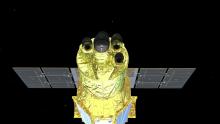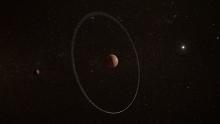Listen to today's episode of StarDate on the web the same day it airs in high-quality streaming audio without any extra ads or announcements. Choose a $8 one-month pass, or listen every day for a year for just $30.
You are here
Asteroseismology
The surface of every star “jiggles” like a bowl of Jell-O. By measuring those motions, astronomers can learn what’s happening far below a star’s surface. And thanks to a couple of space telescopes, they’ve studied thousands of stars — and even converted some of their jiggles to sound.
The technique is called asteroseismology. It measures tiny changes in a star’s brightness, as well as up and down motions on the surface. Those motions are caused by turbulence in the star’s outer layers. The turbulence creates waves that travel all around the star. They also travel deep into the star, then reflect back to the surface.
Measuring those waves can reveal the star’s interior structure and many other details.
Until recently, astronomers could measure the waves only with ground-based telescopes. But the blurring effect of Earth’s atmosphere makes it hard to see them, so there were good measurements for only a few stars.
But two space telescopes have expanded the technique to thousands of stars. CoRoT and Kepler have looked for planets by keeping a constant eye on hundreds of thousands of stars. Among other things, those observations have revealed the waves on the surfaces of many stars.
Astronomers have used those measurements to determine the ages of stars in a cluster, to find out where different groups of stars were born, and to discover magnetic fields in old stars — all from the “jiggles” on their surfaces.
Script by Damond Benningfield





